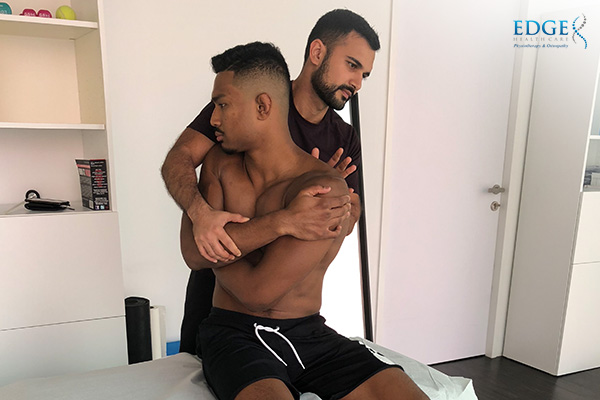A growing number of people are taking to exercise and sports as a means to stay fit, maintain robust immune systems, as well as for recreation and socialising. Unfortunately, the intense nature of sports often leads to sports injuries in both ‘weekend warriors’ and competitive athletes alike. Learn more about some common sports injuries and how sports physiotherapy in Singapore helps treat them.

- Strains
Strains refer to stretched or torn muscles or tendons, which are tissues that connect muscles to bones. They occur when muscles and tendons are stretched further than their usual range of motion, or due to excessive tension, and are frequent in contact and endurance sports. Common types of strains include hamstring, lower back, quadricep, and groin strains, and symptoms include muscle spasms and stiffness, swelling, and reduced motion of the affected muscle.
Sports physiotherapists in Singapore are well-versed at treating strains, firstly assessing the severity of the patient’s condition before advising on loading management and precautions. They will also treat the strain using soft tissue techniques that help promote flexibility as well as natural healing. Physiotherapists will also teach you how to avoid further strains when exercising, such as proper warm up and stretching exercises to do before engaging in strenuous activity.
- Sprains
Sprains refer to stretched or torn ligaments, which are the connective tissues between bones and joints. One of the most common sprains that physiotherapists see are ankle sprains, which arise due to twisting or rolling of the foot through sudden and unexpected movement. Some common symptoms include bruising, stiffness, swelling, and tenderness.
Physiotherapists utilise a grading system of 1 to 3 to diagnose the severity of sprains, with Grade 1 being mild and Grade 3 being a serious or complete tear often necessitating surgery. Similar to strains, treatment for sprains at physiotherapy clinics in Singapore also utilise advise, and your physiotherapist may also utilise manual therapies such as joint mobilisation and soft tissue massage to facilitate strengthening and recovery.
- ACL Tears
Our knees endure constant impact and strain as we engage in sports, making them vulnerable to a range of injuries. One of the most common knee injuries is the ACL (anterior cruciate ligament) tear, which is a band of tissue that connects your femur and tibia. ACL injuries usually arise while engaging in sports that involve sudden stops or changes in direction, and symptoms include a ‘popping’ sensation in the knee, swelling, severe pain, as well as reduced range of motion. In severe cases, ACL tears may require surgery.
Sports physiotherapy in Singapore focuses on facilitating rehabilitation through regaining range of movement, muscle strength and balance, while preventing future injury. This ranges from exercises that strengthen leg and core muscles, to training exercises that improve sporting technique and promote proper positioning, be it doing jumps or pivoting movements.
- Fractures
A fracture is a break or crack in a bone as a result of sudden and excessive pressure. They often occur at the wrist, hand, ankle, and foot, with contact and combat sports experiencing a higher incidence of these injuries. Fractures vary in severity, ranging from partial versus complete fractures, as well as an open or closed fracture. Symptoms include a misshapen limb or joint, swelling, intense pain, as well as reduced mobility.
To treat fractures, the broken bone has to be realigned either by surgery or by force. Following realignment and immobilisation, sports physiotherapists in Singapore accelerate the healing process through rehabilitative techniques, such as soft tissue massage, stretching exercises and joint mobilisation, as well as a progressive strengthening regime. A physiotherapist may also guide patients in utilising assistive devices for walking, as well as improving their awareness of weight-bearing restrictions.
Looking for a quality physiotherapy clinic in Singapore? Get in touch with us today to find out how we effectively treat a variety of sports injuries.

